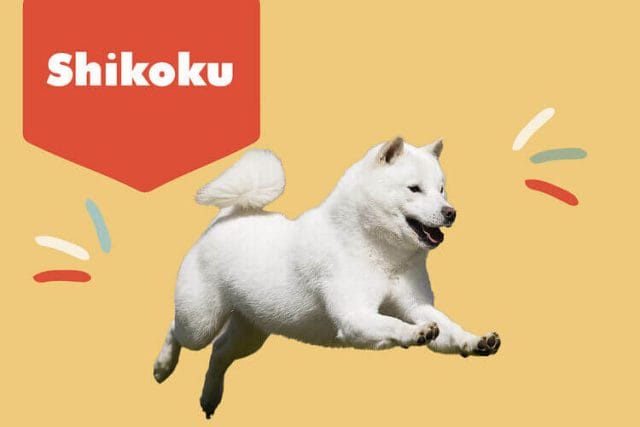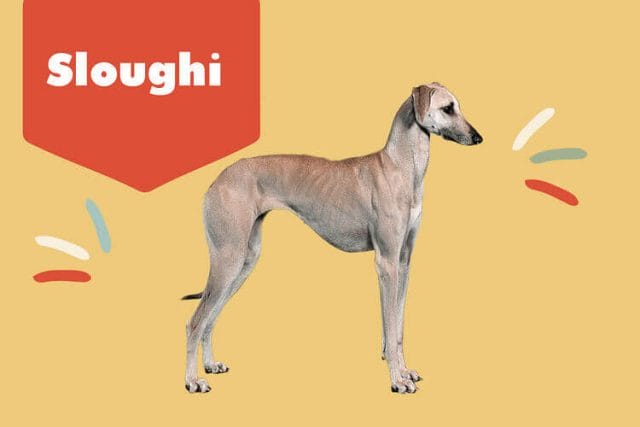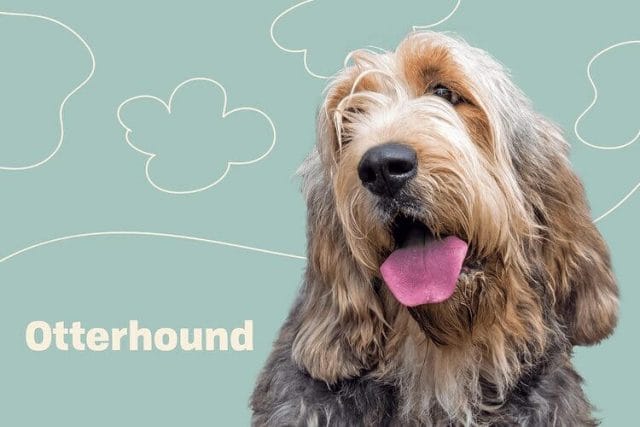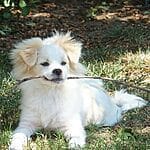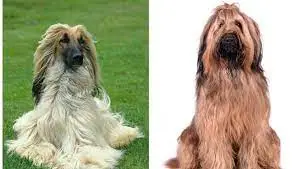Chilier – Mixed Dog Breed Characteristics & Facts

The Chilier is a more recent crossbreed that was created for dog owners who wanted a small, jovial companion from two more established and well-loved breeds. This is a hybrid of the Chihuahua and the Cavalier King Charles Spaniel, two common small breeds. Although small in stature, this breed has a big personality and can make a great companion for a variety of lifestyles.
Both of the parent breeds of the chilier are cherished for various reasons. The Cavalier King Charles Spaniel gives the Chilier a good temperament as well as a sporty side. Despite their small size, Chihuahuas were once a boisterous and aggressive guard dog breed. Even though they have a strong personality today, they are frequently kept only as a companion.
The Chilier is a crossbreed, so it’s unlikely that you’ll find one available for adoption. Nevertheless, there are millions of dogs in shelters looking for homes. Try to adopt from a shelter or rescue if you’re looking for a specific breed. It’s critical to remember how unusual the Chilier is. They might not be recognized by shelters, so they might just be listed as mixed breeds. For a thorough list of the Chilier’s traits, continue reading.
Chilier Mixed Dog Breed Picture

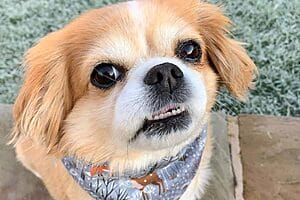
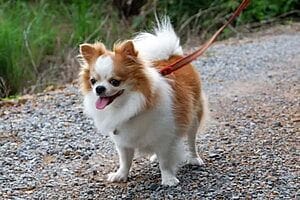
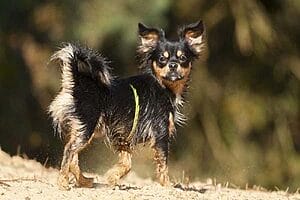
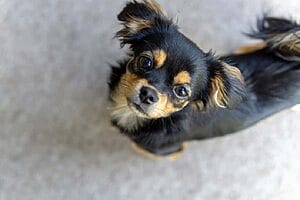

Chilier – Mixed Dog Breed Characteristics
| Adaptability | *** |
| Adapts Well To Apartment Living | **** |
| Good For Novice Owners | **** |
| Sensitivity Level | *** |
| Tolerates Being Alone | *** |
| Tolerates Cold Weather | ** |
| Tolerates Hot Weather | ** |
| All Around Friendliness | **** |
| Affectionate With Family | ***** |
| Kid-Friendly | **** |
| Dog Friendly | ***** |
| Friendly Toward Strangers | *** |
| Health And Grooming Needs | *** |
| Amount Of Shedding | ** |
| Drooling Potential | * |
| Easy To Groom | *** |
| General Health | **** |
| Potential For Weight Gain | *** |
| Size | ** |
| Trainability | *** |
| Easy To Train | **** |
| Intelligence | **** |
| Potential For Mouthiness | * |
| Prey Drive | **** |
| Tendency To Bark Or Howl | **** |
| Wanderlust Potential | ** |
| Physical Needs | **** |
| Energy Level | **** |
| Intensity | *** |
| Exercise Needs | *** |
| Potential For Playfulness | **** |
Vital Stats:
| Dog Breed Group: | Mixed Breed Dogs |
| Height: | 8 to 11 inches |
| Weight: | 8 to 14 pounds |
| Life Span: | 10 to 14 years |
Highlights
- Being the center of attention makes the Chilier the happiest. This breed might be ideal for dog owners who spend a lot of time at home with their puppy.
- The training of the Chilier is not too difficult. They want to win your approval, so even if they don’t grasp a trick the first time, they’ll probably keep trying. The key to training this breed is consistency. The key to helping this breed maintain good manners and stay on track is to hold daily training sessions that last 5–10 minutes (any longer can cause disinterest and backfire as far as creating progress).
- The Chilier is frequently a good breed for a first-time dog owner, but those who own this breed must keep in mind that just because their puppy is small, they can’t get away with misbehaving. While some people may tolerate puppy behaviors like excessive barking or lunging, doing so will harm your dog’s development as an adult. No matter how much someone loves them, a Chilier will become bored and frustrated if they are not properly entertained.
- Separation anxiety can also develop in this breed. Although it’s not necessary, this breed is best suited to dog parents who can bring their puppies to work or are home frequently. This breed should go for walks for at least 30 minutes each day, though a longer stroll won’t likely bother them if done at a relaxed pace. Due to their small size, they don’t require as much exercise, but they still need mental stimulation, which training, scentwork activities, and other enrichment activities can provide. These breeds are sometimes prone to aggravating behaviors that people find in dogs, like excessive barking and chewing. They will repeatedly express their boredom when unoccupied.
History
The Chilier lacks a history as a distinct breed because they are a mixed breed. However, both parent breeds are well-known and adored. The toy spaniels portrayed in numerous paintings from the 16th, 17th, and 18th centuries by well-known artists like Van Dyck and Gainsborough are the ancestors of cavaliers. The athletic Cavalier was bred as a hunting dog and was used for both work and for curling up on a lap at the end of the day.
The breed itself is, however, not very old. After much urging from devoted breeders and supporters, the Cavalier King Charles Spaniel was acknowledged by the UKC in 1945. Fans of American Cavaliers, however, had to wait a bit longer for the breed to gain popularity or recognition in the country.
The Cavalier King Charles Spaniel Club, which has been the sole breed club and registering body for Cavaliers in the US for more than fifty years, was founded in 1954. The breed has only been eligible for registration in the US for less than 30 years, since the AKC first recognized it in March 1995. Although we are aware that the Chihuahua breed is very old, it is unclear exactly when or how it came into existence.
There are two main hypotheses for how the Chihuahua came to be the beloved breed it is today. The first is that the breed is descended from the Techichi, a Central or South American dog breed that is no longer extant. The second theory holds that Spanish traders brought small hairless dogs from China, like the Chinese Crested, to Mexico where they crossed them with small indigenous dogs.
However, the breed that bears their name, Chihuahua, first appeared in the 1850s in the Mexican state that bears that name. In 1890, competitions for them started, and in 1904, a Chihuahua named Midget became the first Chi to be registered with the American Kennel Club. Although longhaired Chihuahuas are now accepted as purebreds, the longhaired variety was probably developed through crosses with Papillons or Pomeranians.
The breed experienced a surge in popularity in the 1930s and 1940s thanks to its association with Latin music bandleader and dance king Xavier Cugat. The Chihuahua has consistently remained among the most well-liked breeds recognized by the AKC since the 1960s. They currently hold the 11th place among the 155 breeds and varieties recognized by the AKC.
Size
A small-sized mixed breed, the Chilier. Since there is no breed standard for them, either parent’s color preferences can be found in their coats. They will have floppy, curly ears and a medium-length coat of curly hair. The breed is most frequently seen in either tan with black markings or white with colored markings.
Personality
The Chilier is frequently kind and loving toward people they know well, but occasionally shy or wary toward people they do not. Regardless of a dog’s generally good temperament, it is essential to work on socialization from a young age; reactivity to people or other dogs will limit a dog’s opportunities in life, such as preventing them from visiting a restaurant that welcomes dogs or using up energy at the dog park.
Training them consistently when they are young will ultimately enhance their (and your) quality of life as adults. If you feel that you are beginning to notice behavioral issues, it’s crucial to work on positive reinforcement training consistently and firmly and to hire a professional trainer.
Health
Despite the fact that chiliers from ethical breeders are frequently healthy, there are some genetic predispositions to health problems with this crossbreed. Many of these problems manifest later in the lives of these dogs.
- Dysplastic Hips.
- Obesity.
- Glaucoma.
- Allergies.
- Cataracts.
- Broken Trachea.
Care
Like most breeds, the Chilier requires daily exercise to feel happy. In addition to some regular physical activity, much of this stimulation can be mental while still being playful. This breed should ideally go on daily walks lasting at least 30 minutes. They also like tug-of-war and other indoor and outdoor games like fetch.
Although not necessary, a backyard is useful for when this dog has a little extra energy to burn. Just make sure it is very secure, as this breed is skilled at escaping. If enough time is spent on training and exercise, this breed frequently makes a great apartment dog.
Feeding
The Chilier should be fed a diet that is similar to that of a small-breed dog with lots of energy. This breed’s active mind can be stimulated by food-motivated activities like snuffle mats or filled toys; they are frequently motivated by harder puzzle toys as well. It’s best to consult your veterinarian to find out the best food to feed your dog because every dog has different dietary needs.
Coat Design and Maintenance
The coat of the chilier does not require extensive maintenance, but it does require routine grooming. Dogs whose coats resemble those of their Cavalier parents may require slightly more frequent grooming due to their elegant, curly, and quick-growing coats. Check the ears frequently for dirt or wax accumulations because they are covered in thick hair.
To prevent excessive shedding and mats, brushing this breed two to three times per week should be sufficient. If you don’t have the time or energy, think about taking this dog in for routine grooming appointments. Make sure to check on nail care, as with all dog breeds.
Kids and other animals
Before choosing to welcome the Chilier into your family, there are a few things to think about. With children, this breed is typically kind and polite, making them suitable as family pets. However, given their small size and fragility, they might be more suitable for older kids. They could unintentionally injure younger kids.
Although dogs require proper introductions, this friendly breed gets along with other family dogs almost without fail. Due to their hunting instincts, this breed is not a good match for small animals like hamsters, but they can get along just fine with cats (which are frequently larger than them!). This breed is generally laid-back with almost everyone in the house, though it can occasionally be standoffish with strangers, usually more out of nervousness than aggression.
Rescue Teams
Since the Chilier is a designer breed, there are no specific rescue organizations for them. Many deserving dogs are still looking for their forever homes, though. It might be simpler to locate similar mixed breeds with Cavalier King Charles Spaniel or Chihuahua ancestry. Try welcoming a rescue dog into your home, whatever the situation. There is no reason to choose to shop when millions of animals are looking for forever homes.
Creator: PetsCareTip



